Contact us directly to discuss your specific requirements, help you with purchasing, or with any other questions.
This "how-to-connect" documentation will explain the initial configuration of an example connection from a OData End-Point to a SharePoint Online List in Office 365.
This guide presupposes that you have installed the Layer2 Cloud Connector and that you are familiar with its basic functionality. The Layer2 Cloud Connector User Documentation will provide you with all necessary information.
2. Configuring the Layer2 Cloud Connector
2.2 Configuring the Data Entity 1
2.3 Configuring the Data Entity 2
Find the collection you want to synchronize from your OData End-Point. In this case we will be using the Customers collection from OData.org.
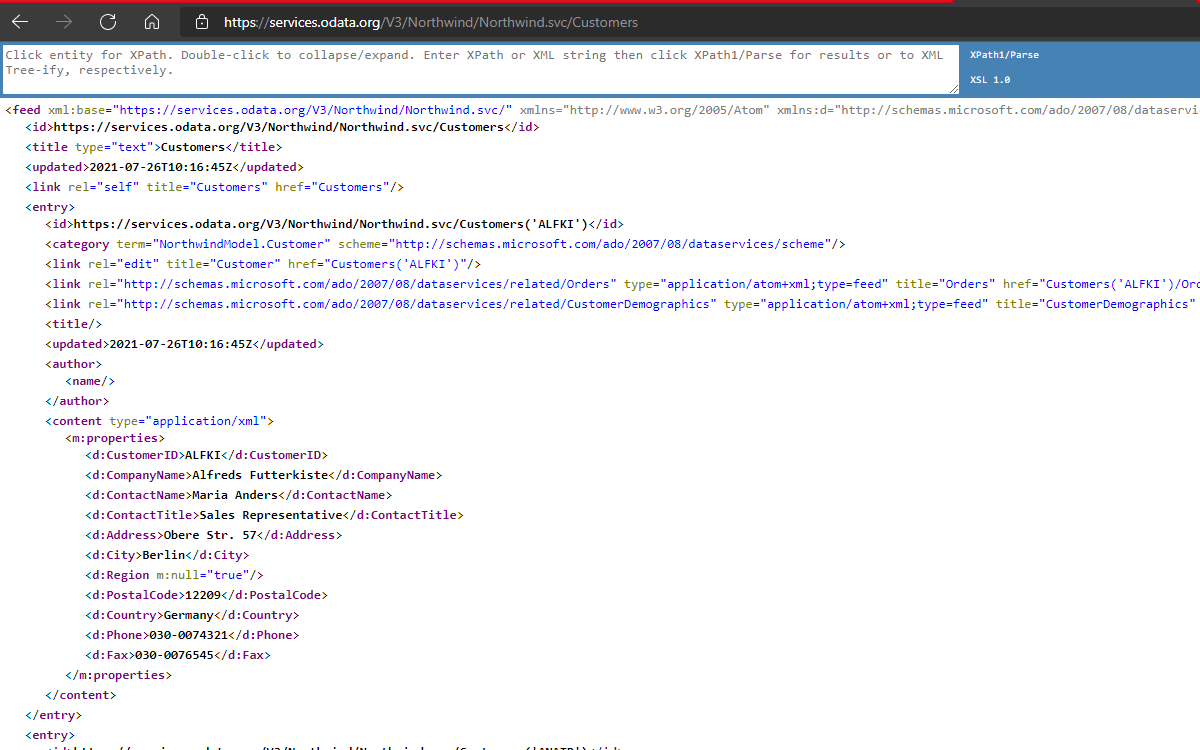
Create a new connection by using the Create New Connection option in the Actions pane (right-hand side). The new connection will appear at the bottom of the Connection Manager List (left-hand side). Click on your newly created connection to open the connection configuration settings.
Choose a meaningful name for your connection and replace the current "New Connection" Connection Title with it.
Connections with the Layer2 OData provider can be bi-directional so far your OData End-Point supports write, however, an initial connection should always be uni-directional to assure that both data entities are identical before switching to bi-directional. Therefore, choose Left to Right as Direction. You can change this setting after your initial synchronization finished successfully.
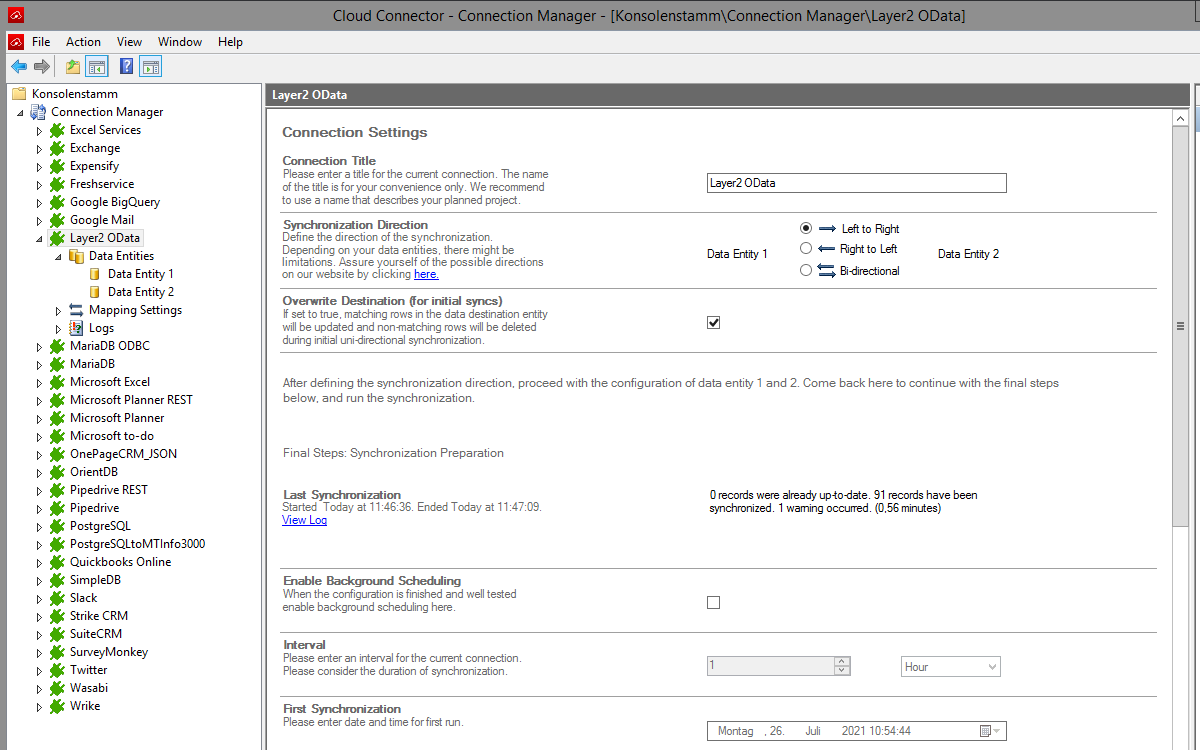
We will now set up our Data Entities. Go to the data entity “Data Entity 1” to open the configuration settings.
Choose a Data Entity Title. It is recommended to give your entities meaningful names to maintain a good overview over the two entities.
Select the Data Provider for Layer2 OData from the data provider list. You can search for OData by typing into the selection box. For more information about the Layer2 OData Provider, please visit our OData FAQ page Layer2 OData Specification.
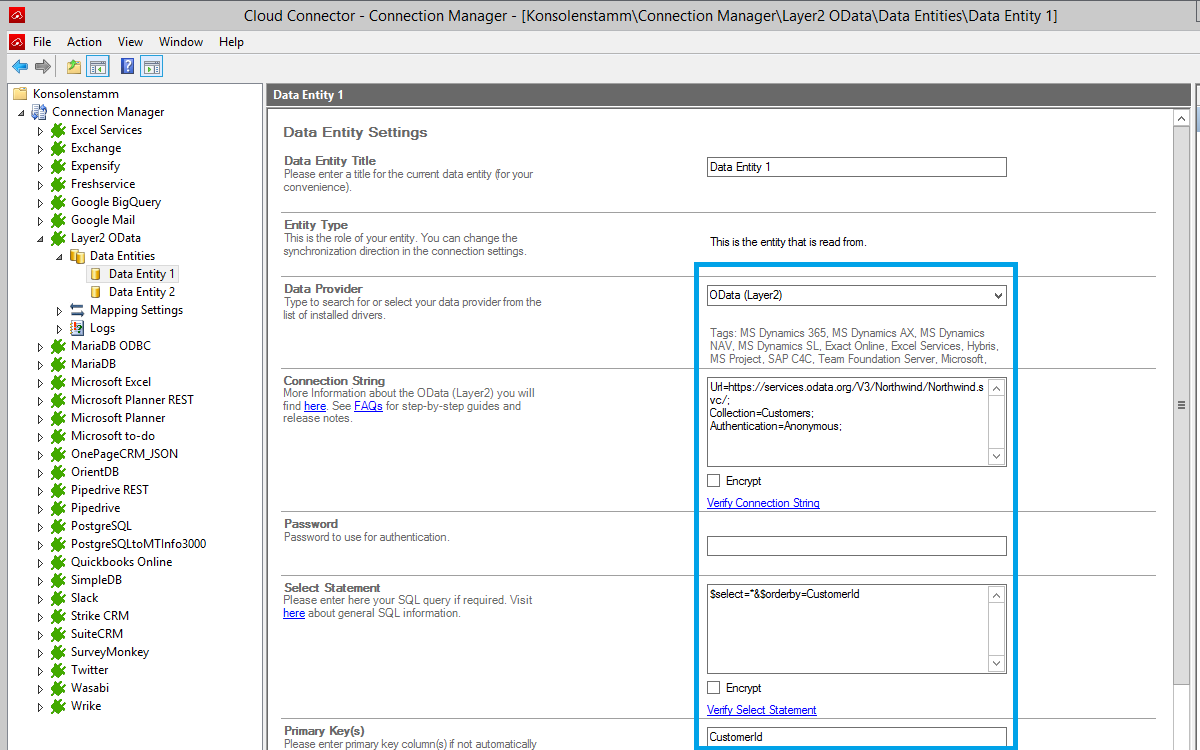
For the Connection String, we need the in step 1 mentioned information. You can copy the below connection string and adjust it to match your gathered information. Use the Verify Connection String option to evaluate if the provided connection string is valid.
Url=https://services.odata.org/V3/Northwind/Northwind.svc;
Collection=Customer;
Authentication=Microsoft_Modern;
Click on “Refresh Authentication Token” sign in and confirm the consent dialog, if required.
The Select Statement text box is used to define specific data queries. We will be gathering all data from our Customers collection.
You can copy the below select statement and adjust it to match your needs. In case a collection is specified in the connection string, you do not need to specify a select statement. Save your changes by using the right-hand pane option Save Changes.
$select=*&$orderby=CustomerId
To check if all necessary fields are received, you can use the Preview Data option on the right-hand pane which will provide you with a pop-up window showing your sample data from your OData End-Point entity.
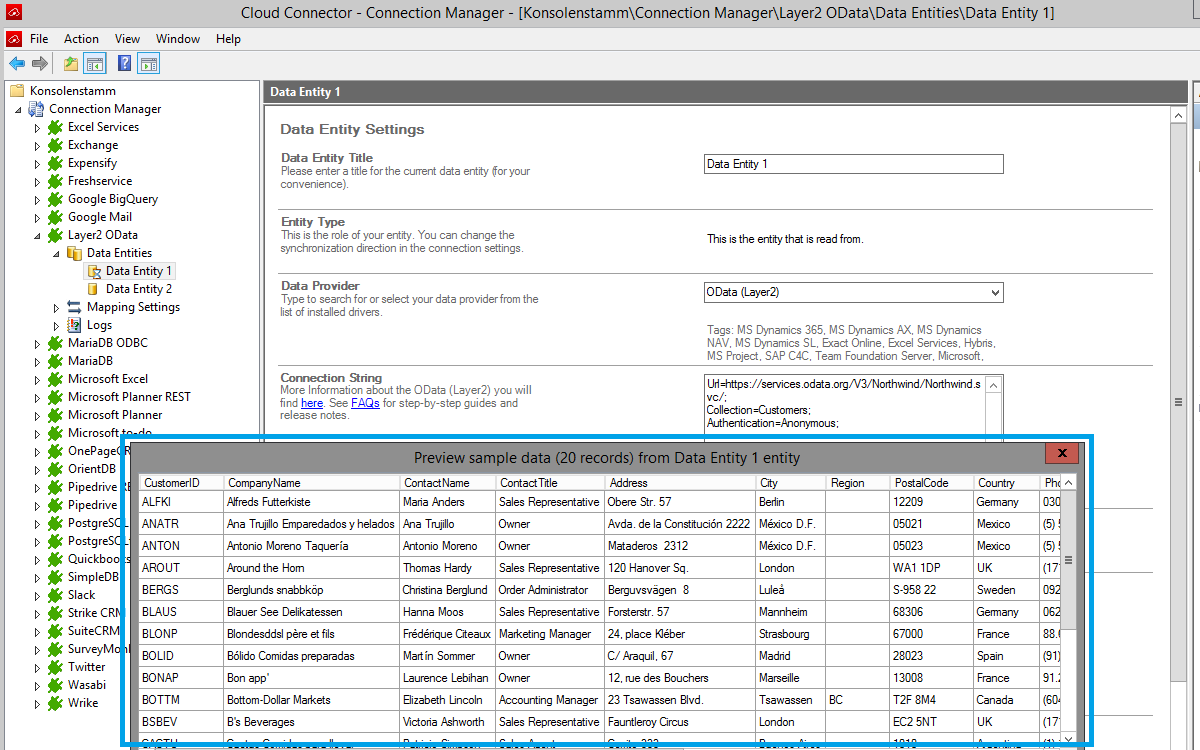
Save your changes by using the right-hand pane option Save Changes.
We are going to send the data to a custom SharePoint Online list. It's required that you set up this list prior to the next steps. Your list should contain matching columns according to your source entity.
Use the left-hand pane to switch to the data entity "Data Entity 2".We will be using the Layer2 SharePoint Provider for this setup.
Please check out our Layer2 SharePoint provider article for more information.
You can copy the below Connection String which contains the minimum of required properties to connect to your custom SharePoint Online list.
URL=https://your_custom_sharepoint_list_url/AllItems.aspx;Authentication=Microsoft_Modern
Click on “Refresh Authentication Token” sign in and confirm the consent dialog, if required. Save your changes by using the right-hand pane option Save Changes.
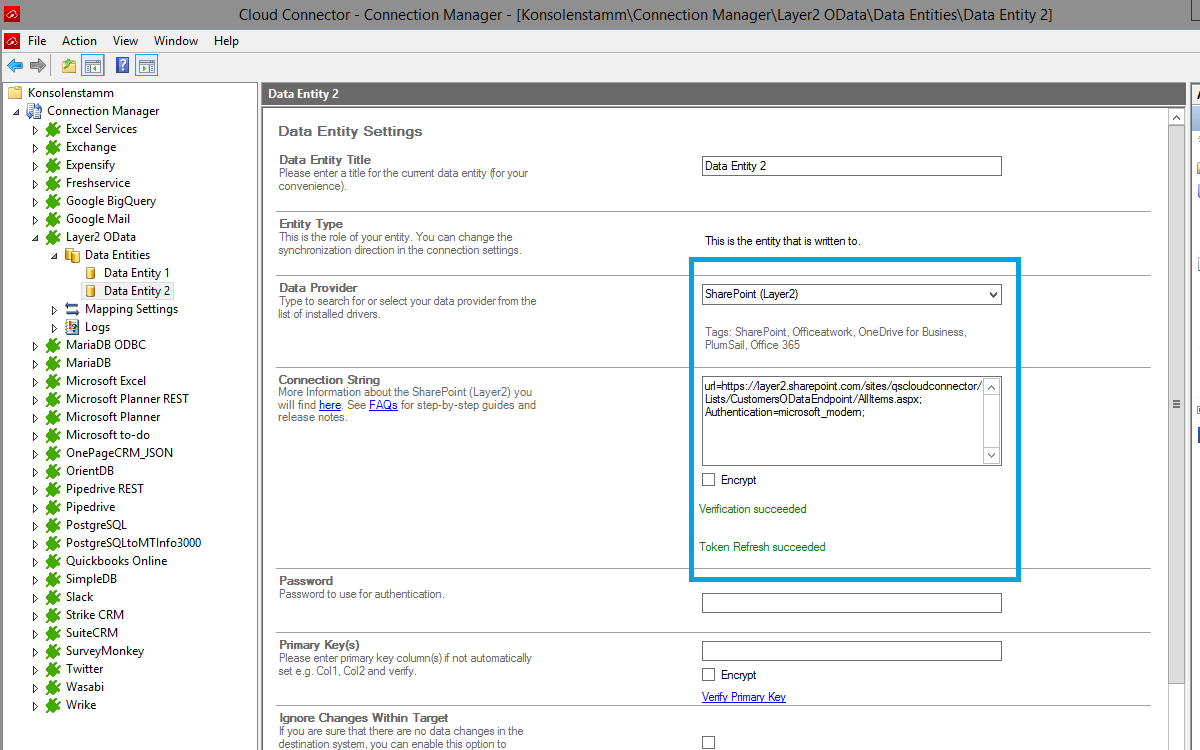
In the next step, we will configure our mapping settings. Click on the Mappings option on the left-hand pane. If your fields from SharePoint are named identical to the fields from your source system.
The Enable Auto Mapping option will match those columns. Disabling this option allows you to match your columns as needed manually. We enabled auto-mapping in our setup.
Save your changes by using the right-hand pane option Save Changes.
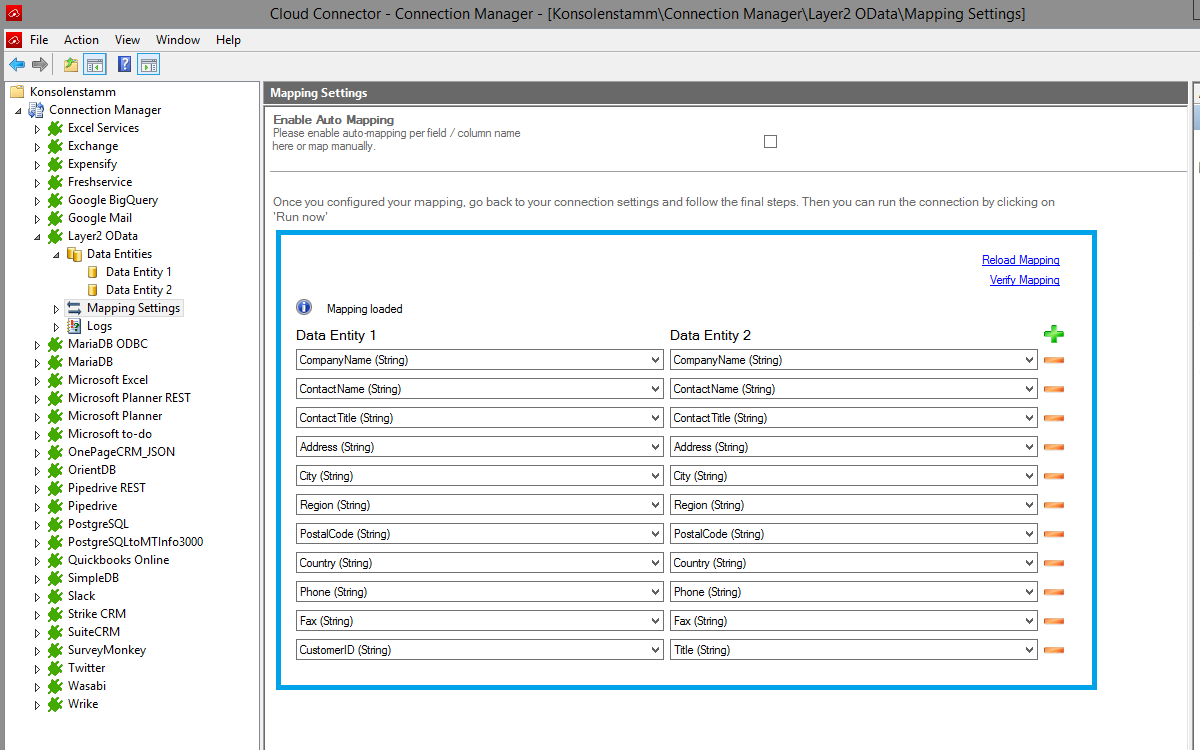
To run your connection switch back to the main connection configuration node and use the Run Now Button located on the bottom of the setup page. The Run Synchronization Toolbox will also display the synchronization process.
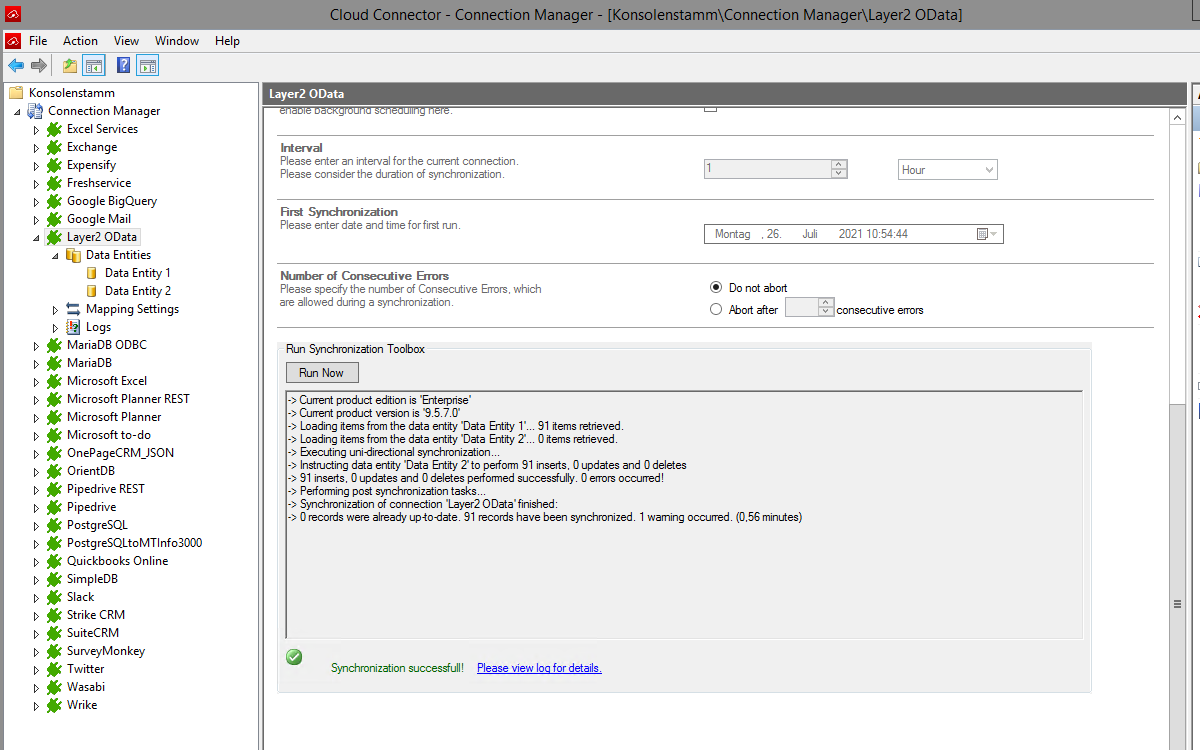
This will be the result in our SharePoint Online List after our initial successful synchronization:
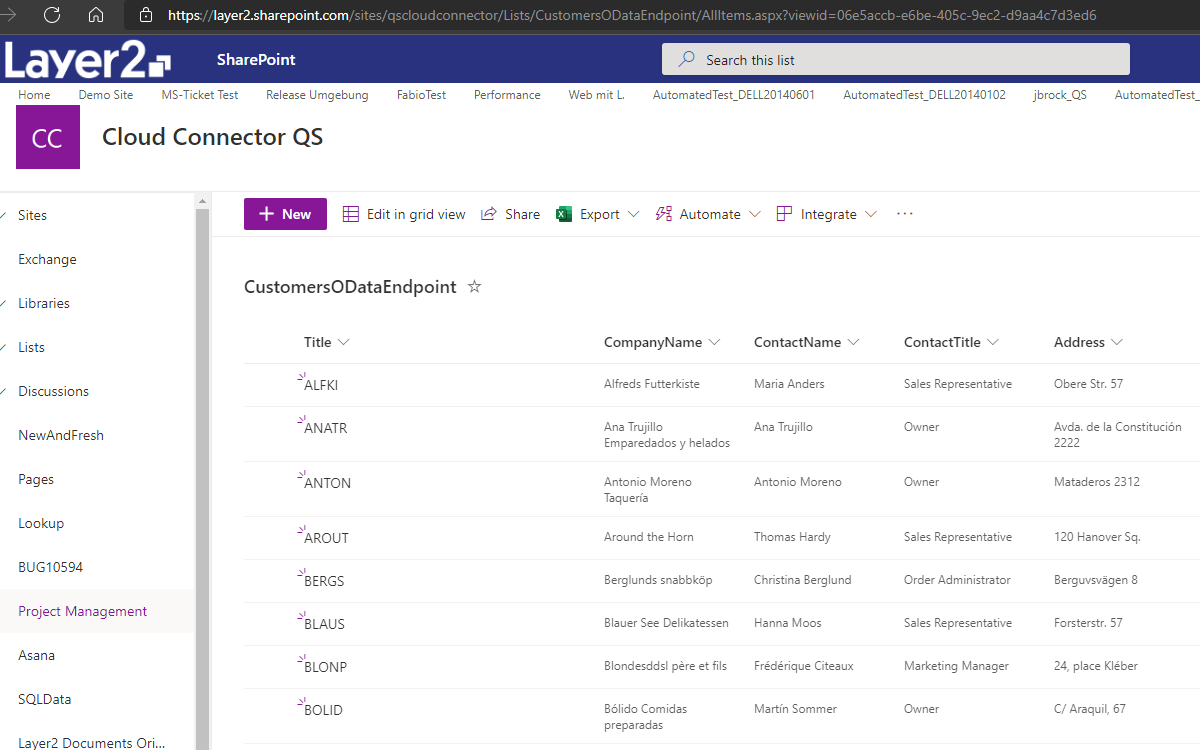
If you want to use a bi-directional synchronization, you can now switch your connection direction after our first initial synchronization run finished successfully. After adjusting the direction, you should check your Mappings settings again because some systems might include read-only columns that cannot be mapped directly.
We also recommend to choose a Conflict Resolution that matches your environments needs. You can find out more about the different conflict resolutions in our Layer2 Cloud Connector User Documentation.
For more information about how to query your data see the OData system query options or some sample select statements here.